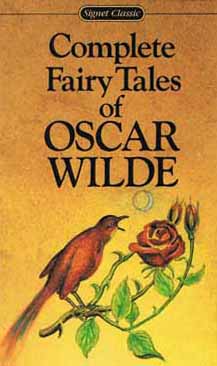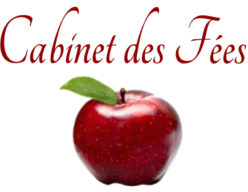Complete Fairy Tales of Oscar Wilde
Oscar Wilde, Signet Classic edition 1990
Reviewed by Deborah J. Brannon
 Oscar Wilde is well known for his wit, his plays, his poetry, his scary aging portrait, and the trials regarding his homosexuality — famous perhaps for everything he’s ever done except his fairy tales. Well, here’s a tidbit for you: those fairy tales represented one of his first major works to see print in the form of The Happy Prince and Other Stories published in 1888. Jack Zipes even suggests, in his excellent afterword to the Signet Classic edition, that it was in the deceptively simple, evocatively rich, and satire-ready language of fairy tales that Wilde first began developing his unique voice.
Oscar Wilde is well known for his wit, his plays, his poetry, his scary aging portrait, and the trials regarding his homosexuality — famous perhaps for everything he’s ever done except his fairy tales. Well, here’s a tidbit for you: those fairy tales represented one of his first major works to see print in the form of The Happy Prince and Other Stories published in 1888. Jack Zipes even suggests, in his excellent afterword to the Signet Classic edition, that it was in the deceptively simple, evocatively rich, and satire-ready language of fairy tales that Wilde first began developing his unique voice.
I don’t wish to steal all of Zipes’ thunder, but I’d like briefly to touch on why Wilde wrote and published the fairy tales he did. While there seems to be no directly stated reason from Wilde himself, several factors no doubt contributed to the tales’ composition. In the 1880’s, Wilde’s children were born. Concurrently, literature in the fantasy, children’s, and fairy tale genres was proliferating through the efforts of George MacDonald, Andrew Lang, and the Wildes themselves. Lady Wilde (Oscar’s mother) edited books on Irish folklore while his wife published two collections of children’s stories. A literary man by inclination and association, Wilde was thus surrounded by folklore and fairytales. One could venture that the apparatus for codifying both morals and satire that fairy tale language provides appealed to Wilde’s desire to work his social philosophies and trademark irony into his literary compositions. The deceptively childlike tales also provided him a safe space to externalize and work through deeply personal issues. (For more theorizing along these lines, be sure to read Zipes’ afterword and see my other recommendation at the close of this review.)
While all of the fairy tales in the complete collection prove accessible to children of various ages, the stories vary in subtlety and can all be read at a variety of levels in a variety of ways. This first volume features five stories, beginning with the one which lends the collection its name: “The Happy Prince” is the sad and touching story of a statue of the happy prince who in fact weeps for all the iniquity present in his city. The way in which the prince befriends a worldly sparrow and how they both bring a little light into the prince’s city can teach a lesson of generosity. “The Nightingale and the Rose” brings us roses in winter, piercing the reader with the thorns of understanding love and infatuation. “The Selfish Giant” evokes the importance of the laughter of children and sharing to the well-fed of spirit. “The Devoted Friend” praises devotion even as it condemns exploitation and mocks blind devotion. “The Remarkable Rocket” fully mocks the empty and proud in a hilarious pageant of personified fireworks.
A House of Pomegranates, the second collection included here, accomodates deeply complex tales, featuring both more complicated plots and stories emotionally fraught. In “The Young King,” the first story of the collection, Wilde seems to be riffing on both Greek mythology and Christian tales as an innocent youth close to nature is made king of a proud and worldly city. At first seduced by beauty, the youth is subjected to torturous visions disclosing from what horrors such beauty comes. “The Birthday of the Infanta” brings us an innocent and hideous dwarf who is made sport of by a guileless princess in the panoply of her sheltered palace life. “The Fisherman and His Soul” immerses us in witchcraft and Satan-worship, the value of the soul and its relationship to the heart, and the love stories that can exist between mermaid and man, soul and body, priest and flock. The last tale, “The Star-Child,” demonstrates pride and its fall, the hard life of generosity and loyalty, and the qualified reward that can come at the end of such a life when toilsome travels and harsh slavery join the list of travails. Accompanying all of the stories are lovely illustrations that fantastically capture the modes of whimsy, innocence, delight, and passion featured throughout both The Happy Prince and Other Stories and A House of Pomegranates. Walter Crane did three full-page insets, invoking in impressive black and white the faces of the little prince, the selfish giant, and the fate of the remarkable rocket. Jacomb Hood peppered spot pieces through the rest of the first volume, bringing us images of the happy prince’s swallow, the laughing children in the giant’s garden, and the plight of that most devoted of friends (to name but a few). Charles Ricketts and Charles Shannon together did the illustrations for A House of Pomegranates and their collaboration provided us readers with pieces truly evocative of the glittering seductions and subtle emotions inundating this second volume of Wilde’s fairy tales. Anyone interested in Oscar Wilde, fairy tales, Victorian literature, or the presence of fairy tales in the Victorian era would do well to read this collection — in fact, it’s an absolute imperative for several of the aforementioned! Those interested in critical analyses of the tales or sociopolitical commentary on their construction should look at Jarlath Killeen’s 2007 work entitled The Fairy Tales of Oscar Wilde. For my part, I can’t wait to read this collection once more and then again. And again. There is much to appreciate in the Complete Fairy Tales of Oscar Wilde, both in the sheer vibrancy of the fairy tales Wilde penned and the sheer density of complexity waiting to be unravelled therein.
